We left Rio Quijos Lodge and continued birding in the Eastern Andes making our way to Guango Lodge where we would spend the night. After breakfast we had our last birding at Rio Quijos and then continued on to Cuyuja, Guango and up to Papallacta. Using the same excuse as in other blogs and the same apology, record keeping was not specific and this post will include observations and photos from all of these places.
On our first day of birding at Yanacocha in the West we had seen Black Crested Warblers but I had not gotten a good photo. This morning I finally had one that cooperated and got several photos. It is very reminiscent of the Wilson’s Warbler common and that breeds in Washington State with a bright yellow body but instead of a solid black cap, it has a single black streak down the center of it’s cap. It is a good example of how seemingly very similar species are in very different classifications as the Wilson’s is Cardellina and the Black Crested is Myiothlyptis. We also had Russet Crowned Warblers and more Spectacled Redstarts.

We left Rio Quijos Lodge but stopped at another spot on the river again hoping for Torrent Duck. Invisible at first, we saw one fairly close that then gave us great looks as it lived up to its name and swam from rock to rock in the fast moving torrent of the river. It was a female, one of the few species and especially duck species where the female is the more colorful. We spent several moments marveling at the duck’s ability to navigate the fast flowing water, even swimming upstream. I had seen a male before and was very pleased to add this observation and photo. For Cindy it was a new experience and one she might have missed if seen where we tried earlier as she had not made the walks down the muddy trail to the river at Rio Quijos.
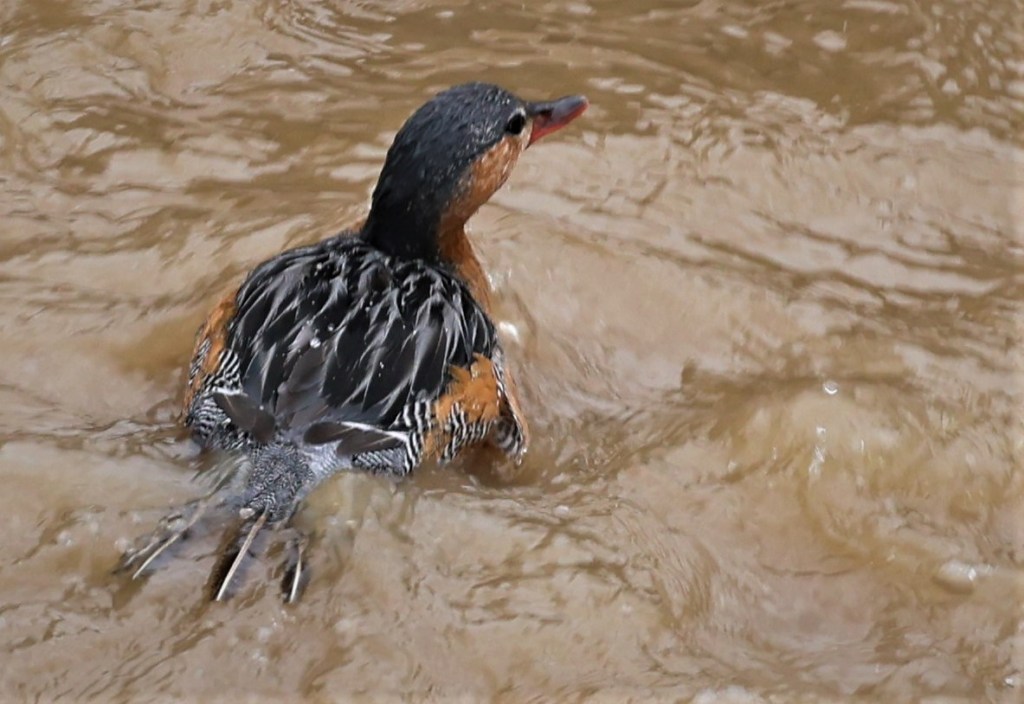
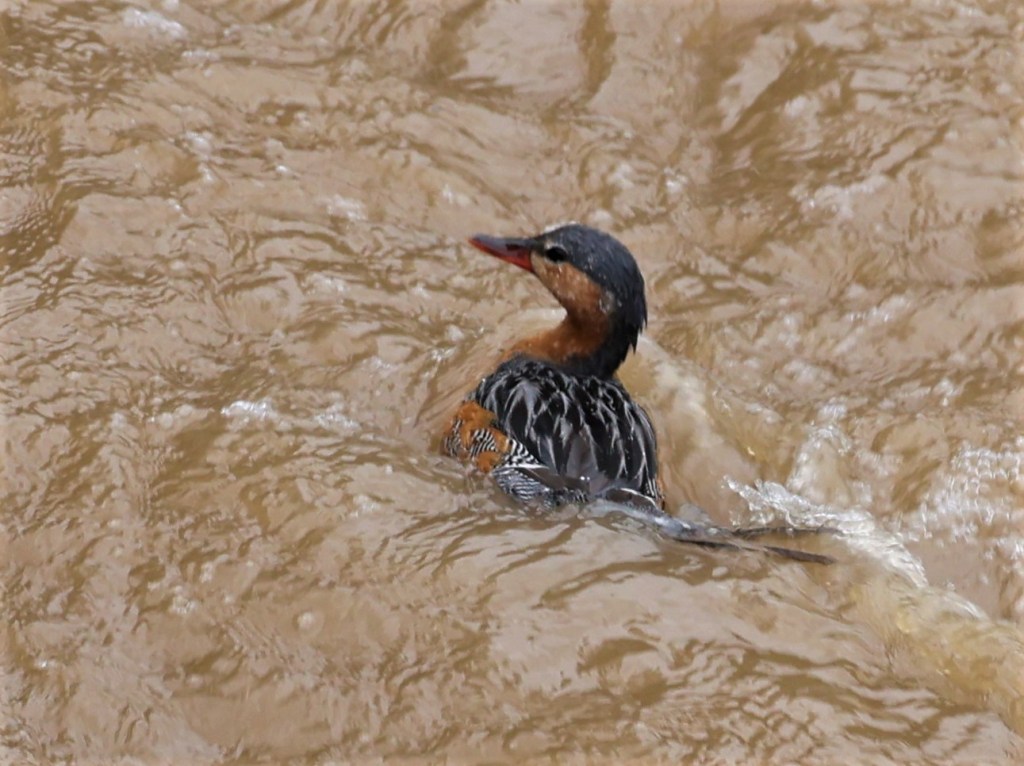




There may not have been a lot of sparrows in Ecuador but many species had similar behavioral characteristics – scratching at the leaf litter and skulking near the ground. Among these were the Brushfinches. There are 12 Brushfinch species in Ecuador and we saw half of them. I had seen 4 of the others in Peru. We had three beauties this day, all new for the trip: Pale Naped, Slaty and Gray Crowned and had photos of all but the Slaty which I would get the next day.


This being Ecuador of course, there were hummingbirds – ten species for the day including 4 new ones for the trip: White Bellied Woodstar, Mountain Velvetbreast, Collared Inca and Tourmaline Sunangel. Ebird has the description of Woodstars just right: “tiny hummingbirds that fly like large bumblebees.” That is exactly what they do – fly and flit around like bumblebees – really small and very active. So it is pretty easy to tell that a hummingbird is a Woodstar because of size alone. Identifying other hummingbirds often requires catching a good view of the shape of the bill or its color which is often confusing depending on the light and especially the iridescence. Not so with the Collared Inca. It appears essentially black and white with a highly contrasting large white chest patch (although apparently rufous in some populations elsewhere).
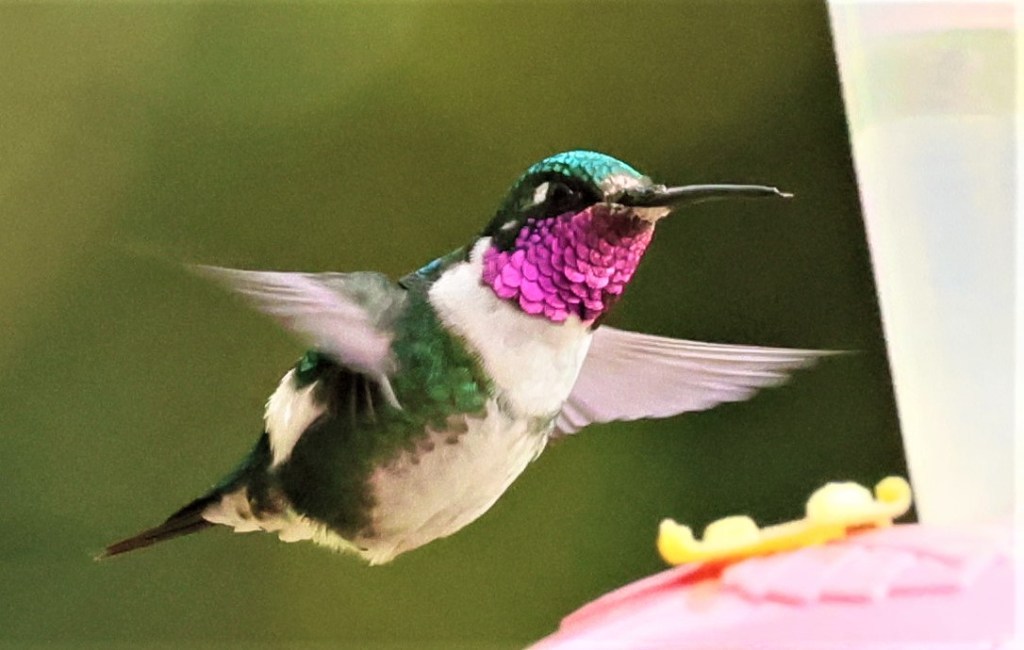


In the Western Andes Mountain Tanagers had been some of our favorites, and today we added two more. I wish I had gotten a better photo of the Scarlet Bellied Mountain Tanager which had been seen at Yanacocha but without any photo, but no complaints about the coolly and aptly named Lacrimose (tearful) Mountain Tanager or of the Hooded Mountain Tanager. I did not do as well with photos of the three “not mountain” tanagers: Golden Crowned, Beryl Spangled and Blue and Black getting an ok only photo of just the first of them.

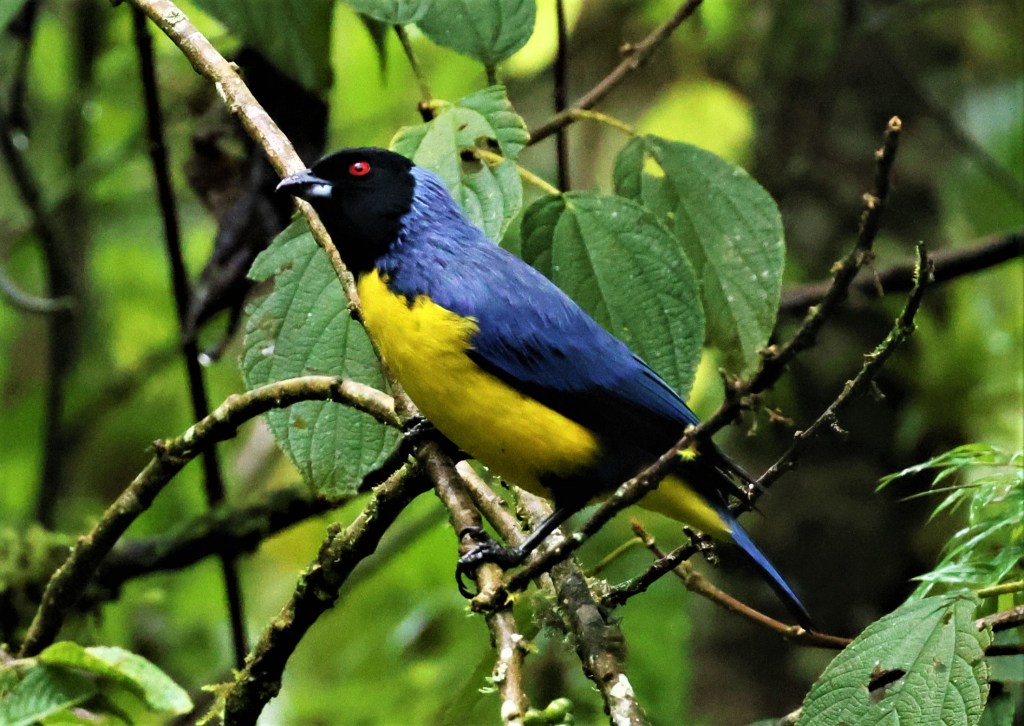

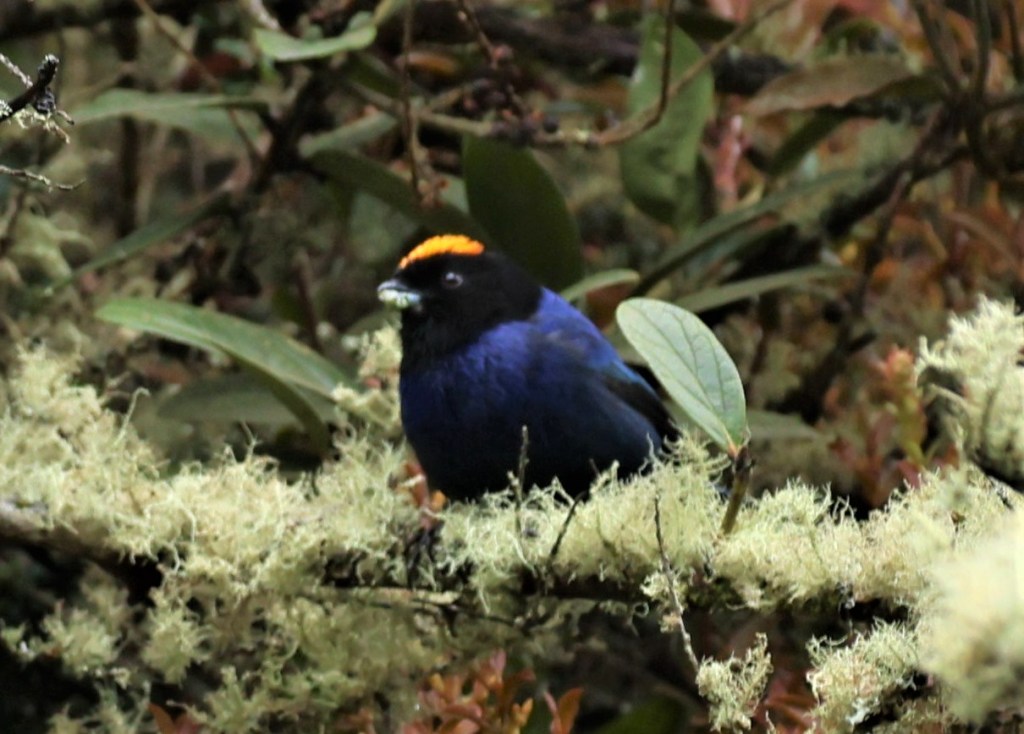
Altogether we had nine cotinga species on the trip including the two Umbrellabirds, the Cock of the Rock, one Fruiteater, two Fruitcrows, one Piha and two with cotinga in their name. Aside from some species like Tinamous and Tapaculos that were heard only, this group may have been the one with the worst overall photos with the best picture being of the Red Crested Cotinga seen this day not nearly as colorful as some other cotingas which I will hopefully add to my life list someday. It has a tiny red crest – just barely seen in the photo.

I finally got a decent picture of a Wren – as a pair of Rufous Wrens perched in the open for several seconds. A picture of a Mountain Wren was not so good but appreciated. There was one more Wren photo – called a Grass Wren in Ecuador and a Sedge Wren in the U.S., I guess there is some thought that it may be split as a separate species. I vote “YES!”
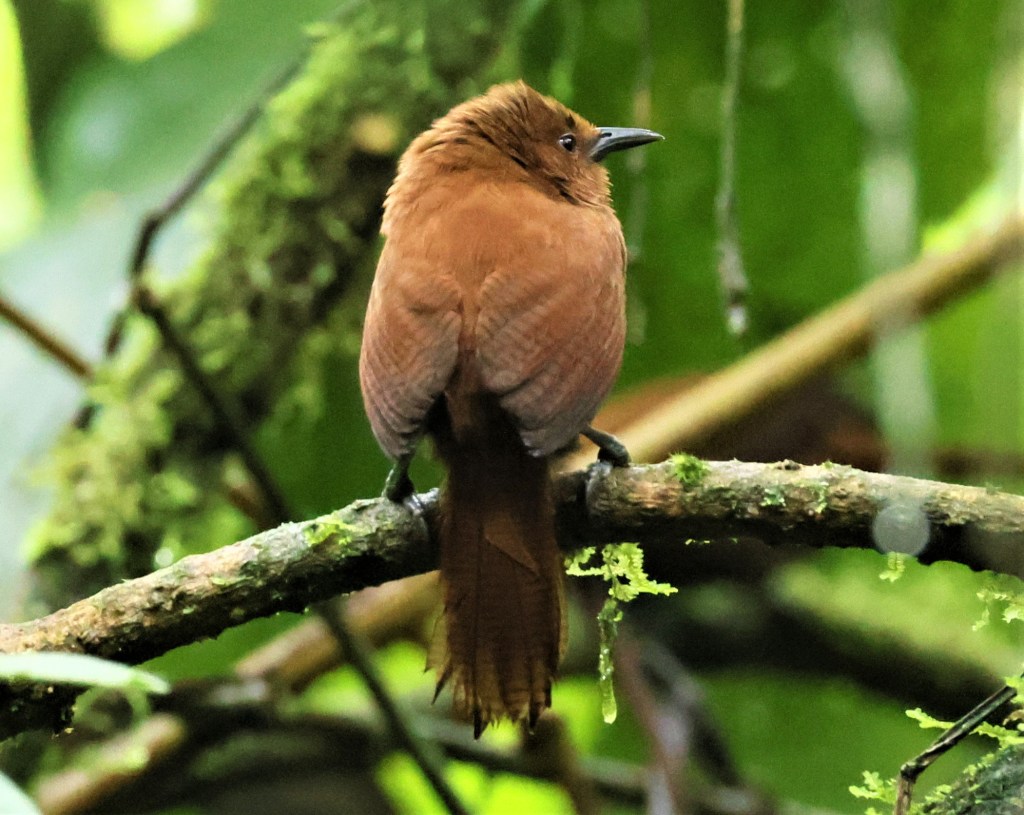


Even with the aid of various ID apps and fieldguides, I always had trouble identifying the many woodcreepers and related species. Their often being in poor light did not help but trying to distinguish bill lengths, shades of brown and degrees of streaking or spotting was never easy. This Strong Billed Woodcreeper was an exception as it was in relatively good light, was relatively close and still and had what clearly looks like a “strong bill” but also important was streaking versus barring below which is found on other related species.

Caciques are similar to our icterid blackbird species with fairly long and pointed bills. All seven species found in Ecuador are primarily black with most having some yellow or red on their wings or the bases of their tails making them colorful in flight but generally mostly or all black when perched. I tried to get a photo of the Mountain Cacique with lots of yellow showing but was only able to get a decent photo of it perched straight on – the only yellow being its bill but showing its very blue eye.

We had seen five Antpitta species in the Western Andes and today we added a sixth species and our first for the Eastern Andes. There are 17 Antpitta species in Ecuador. Adding the Undulated Antpitta was great but I think it will take a lot more trips to add many more. They are tough. Even tougher are the closely related Tapaculos. We heard both Paramo and Blackish Tapaculos and got brief glimpses of these very dull gray or black birds. No chance for a photo in thick and dense foliage.

In many ways Guango Lodge was Cindy’s favorite – not compared to the amazing and luxurious Sacha Lodge which was in a class of its own, but Guango had a special feel. It is older and pretty basic, but definitely comfortable and quaint with a unique design and a solidity that was very appealing. It helped that there were spectacular roses in the dining room and friendly and efficient staff. The food was great as were the birds but it was just the feel of the place that appealed most. There was no heating at the lodge and it was projected to get cold at night. The solution – the Lodge provided each of us with a hot water bottle – which stayed warm throughout the night.

A word about roses. Ecuadorian roses have thicker stems and larger buds and blooms than those produced elsewhere enabling them to stand taller and straighter. Exporting roses is a big business with more than 500 varieties grown in the country. Cut flowers are a huge business in Ecuador with roses being almost 3/4 of the revenue. It is the world’s fourth largest producer of cut flowers and roses are the fourth largest revenue producer in the country. They are a big deal and we saw greenhouses in many areas of the country.



Three more photos for the day not from Guango itself. A most challenging photo was of a Brown Backed Chat Tyrant taken through a fence which is my excuse for its being somewhat out of focus. Challenging for a different reason was a Cinnamon Flycatcher. It perched on a branch but at an impossible angle – never fully in the open and usually behind at least one leaf. The last is back to the hummingbirds again. Guide Jorge Luna took one of the flowers near a feeder and pour nectar on it and then removed the feeders so it was the only source of nourishment for the hummers. Sindy held the Chinese Lantern and thoroughly enjoyed the visits from several hummers but especially the Collared Inca.

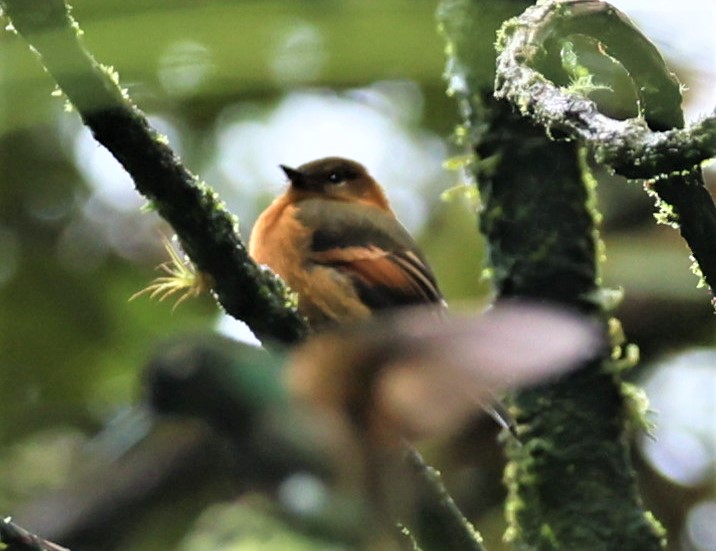


We finished the day with 55 species – 27 new for Ecuador and 17 new lifers.
